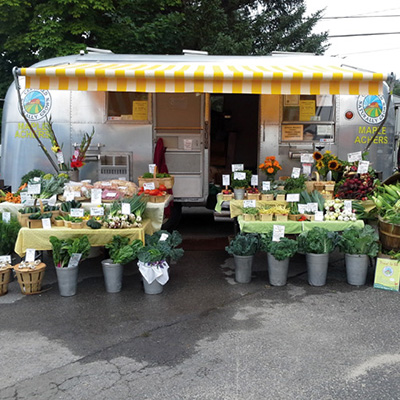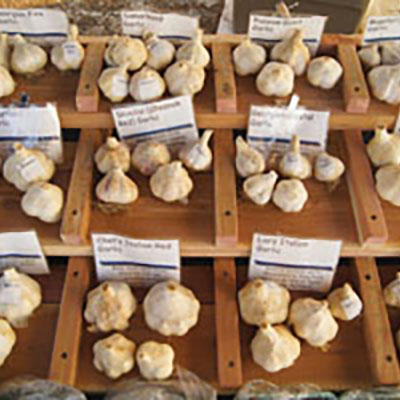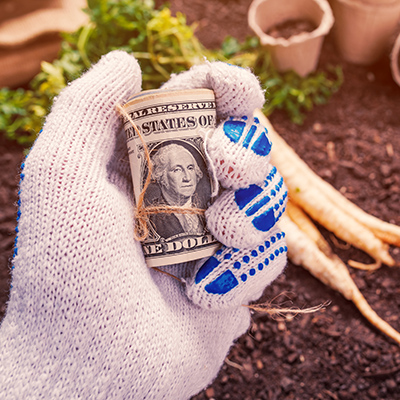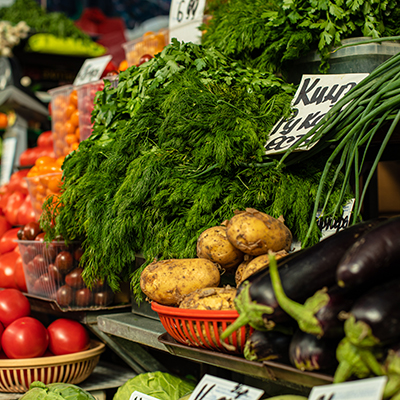Now is the time of year when a lot is happening on your farm that would make great photos, videos and content for social media. It’s easy to think that you don’t have enough time when you’re busy. However, having a strategy where you schedule and/or delegate social media as you move into the summer can keep you connected with your customers in less time than you think.
Online marketing is a huge opportunity to reach current and potential customers. But it can also be stressful because there are so many opportunities, you could spend your whole week fine-tuning your marketing setup. I do know larger farms that have full-time social media managers!
I’m going to assume you don’t have a full-time social media manager and you can’t be tied to your smartphone or computer all day because you need to do the work of growing crops. You need to focus on the areas where you will get the most return, develop a system around it, and execute this strategy each week over the long term - even during the busy season!
Once you create a weekly communication system, you will reduce your stress during the busy season while maximizing your outreach potential. During two hours of scheduled “marketing time” each week, you will develop a few key pieces of content and schedule that content to go out at the right time so you can focus on farming rather than tweeting and emailing.
This is a rather small part of the overall job of being a market farmer, but it is absolutely essential. I sometimes say that a farm without marketing is just a big compost pile. If you are going to sell direct-to-consumer through farmers markets, CSAs, or other channels, it is vitally important to engage with your customers, get them to connect with you, and tell your unique story. Your farm and your story is a big part of the product you are selling!
Developing the content
To create a weekly communication schedule in order to maximize your outreach and sales, the first step is to figure out what to post. If you need to come up with a new concept for your posts each week, you will fail during the busy season. It is just too much mental effort to come up with something creative each week.
Understand that your customers are reading your emails and social media updates on the go while they are in line at the bank or taking a short break from work to click around. They are not in the mood to read 1,000 word novelettes on onion harvesting. I’m happy to say that there is a short cut.
Photos. Look down your Facebook feed. Which posts have the most likes, comments, and shares? They have compelling photos attached. Photos connect your audience immediately to your farm, even if they are in line at the bank.
One photo, one paragraph
My recommendation is that the raw material of your marketing efforts is a type of post I call “One Photo, One Paragraph”. Choose a great photo from the past week (because you are taking photos all the time, right?) or from your archives, write 250 words or less about that photo, and this content goes out on all of your communication channels.
Not only does the photo connect people to the farm, this kind of update is so easy to create. It should not take more than 15 minutes of your time to put this together, leaving you with more time to be a farmer.
See the facebook post on page 3 from Bossy Acres about saving seed. It is a photo with 67 words and even asks a question at the end, which is a great idea to further engage with your online audience. This post took about 3 minutes to create got 14 likes and many comments.
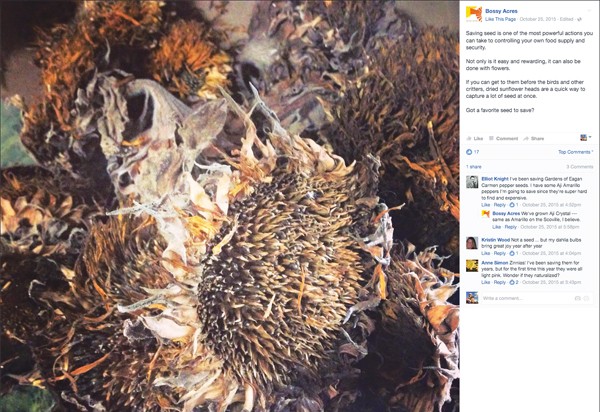
Recipe of the week
In addition to your photograph, pick a recipe of the week that features a product that is for sale, in the CSA box, or at market during that week.
Many of your customers are a little nervous in the kitchen and your guidance is essential for success with what they buy. In general, people cook less than they used to and feel less comfortable in the kitchen. According to the USDA, food dollars spent outside of the home has gone from 25% to 47% between 1970 and 2012. Don’t expect this trend to change.
Find a recipe that is simple and easy to prepare. Focus on adaptable recipes that can be prepared in less than 30 minutes. Think about teaching good cooking technique rather than impressive culinary creations. Over time, the goal is to build customers that are comfortable improvising in the kitchen. There are a million sites to find recipes and don’t be afraid to repeat a recipe from past seasons. Even though copyright law doesn’t extend to recipes, you should always attribute the source. A book with recipes designed to work with seasonal produce is The Farmers Market Cookbook, available from Growing for Market.
Try to use a recipe that you have prepared or has been recommended by a customer so you can relate your personal experience. Don’t spend too much time on this step. Again, this should not take more than 15 minutes. Just think about which product you want to feature that week and go find a simple, delicious recipe that includes it.
Market-specific content
Depending on your marketing channels, you may want to write a short update specific to CSA members about what is going to be in the box or what is going to be at the farmers market. This content will be used in your CSA or farmers market specific communications. Spend no more than 15 minutes on this step.
Schedule marketing time
So far, we have 45 minutes blocked out for you to write a “One photo, one paragraph” update, choose a recipe, and create specific content for sales channels.
For success with this method, it is absolutely essential that that you make the time for this each and every week. I suggest blocking two hours total in your schedule each week and put it on your calendar as a recurring event. There will be times when the pigs get out and you just can’t make this happen, but if it is on the calendar, it will happen more often than not.
Reach people where they are
During your scheduled marketing time, you have created the key pieces of content for the week, but this content has not been distributed to customers.
To ensure maximum reach with the least amount of effort on your part, I recommend posting this content to your website, email list, and social media. Some small changes will need to be made for each communication medium, but now that you have the raw content material it should not take more than 30 minutes to repurpose the content and get it ready to go.
Website/blog
The center of your marketing efforts is your website. Very few people will come to your website independently for the purpose of learning what is new with your farm, but each update you push out should link the reader back your website so they can learn more about you and hopefully buy from you!
For posting this kind of weekly update, posting to a blog within your website is natural. Even if you don’t have a blog on your website, you can simply create new pages to house the weekly content. However, any modern website platform including Wordpress or Small Farm Central will make it easy to have a blog within your website.
Another side benefit of having the content on your website is that it will be indexed by search engines so your old blog posts may draw some search engine traffic over the long term.
When you create your email list and your social media posts, link back to the blog article URL. For anyone who is new to your farm or farmers market, they can click on the link and learn more about you on your website and even opt-in to get future communications from you! This is an opportunity to grow your audience and sales over time.
Email list
A robust email list is at the center of your outreach. If you do nothing else for your marketing, create an email mailing list.
Email has been around since 1993. It is the old geezer as far as marketing is concerned. It is not fun and new like social media, but since most people check their email daily, if not constantly through the day, it is a very powerful tool to reach your audience.
The weekly email needs to be short and punchy. Remember, many people are checking this on their phone with a tiny screen and in the middle of their busy lives. Just add your “One photo, one paragraph” at the top of the email, then your weekly recipe, and then anything else people need to know to buy from you (for example where you will be at market that week).
Use an email marketing tool like Mailchimp (which can work in conjunction with Small Farm Central’s email tools), Constant Contact, Drip, or any of the hundreds of other ones out there. This allows you to gather stats, like open rates and click through rates, but it also keeps your emails out of spam folders. Any email marketing software will also allow recipients to unsubscribe at any time, which is really important to make sure you are not bugging your customer base!
Don’t send emails through your regular emailing program. It is not classy or effective. Segment your lists as much as possible based on what is important in your business. For example, if you sell at multiple markets, make sure you collect information about which market each subscriber is interested in and mark that in your email marketing software. This allows you to send specific communications at the right time to people interested in each market.
Let people opt-in for the mailing list on your website and anywhere you connect with the public, like a farmers market. A key goal in your marketing plan should be to grow your email list over time, so commit to talking up the value of the email list with customers. An email mailing list opt in should be prominent on your website. In fact, short of buying something, opting in to your mailing list is a key goal for any visitor on your website. Once someone has signed up for your email list, you can nurture them over time and turn them from “interested” into “customer.”
Social Media
I think that social media does have a place in your marketing strategy, but I am wary of the time and skill it takes to do right. It is not going to solve your marketing problems all by itself. It is just a part of a successful marketing strategy.
You can spend your whole day marketing your farm or farmers market on social media. If you want to spend hours a day with these tools, that’s fine, you will have a whole different approach than I suggest here. I am talking to people who have many other responsibilities, so I want you to get the most return out of the least amount of time.
I will briefly mention the four main social media platforms (as of May 2017): Facebook, Twitter, Instagram, and Pinterest. The social media world is constantly changing. Keep learning to make sure you get the most out of it.
The most effective social media platform that I have seen for farms and farmers markets is Facebook. It is fairly easy to master and it has a huge reach.
There is a lot of talk about Twitter. From my experience, I see few farms using Twitter effectively because it takes a pretty huge time investment to get right. If you want to have a basic account on Twitter, you can simply post your weekly content here and do nothing more with it. You probably won’t get a huge reach, but you will reach people who use Twitter as the center of their digital lives.
Instagram, now with 400 million users, has more users than Twitter. Since it is very visual, many farmers say that Instagram has been powerful for their farm marketing.
Pinterest is another popular platform. This is a good place to gather recipes over time into a recipe board, but it is not a platform I can recommend unless you have a really specific interest in it.
If you want to keep it really simple, just make sure you have an active Facebook presence and you can ignore the rest of the social media networks for now!
Text Messages
A great tool, especially for farmers market sales, is the text message. Text messages have a super high open rate (80%+) and are read very quickly after they are sent. They also have a huge reach since anyone with a cell phone can receive text messages -- they don’t need the latest name brand smartphone to get them!
There are many ways to send bulk text messages, we have built a tool called FarmFan (http://about.farmfanapp.com) that makes texting for farmers market sales really simple.
Scheduling your week
Now it is just a matter of making a schedule for it all to go out to your online audience. During your marketing time, use a social media scheduling tool like Hootsuite to schedule these updates to go out automatically during the week. That way, you can focus on growing, harvesting, and everything else you need to do rather than social media updates!
A sample schedule
This example schedule is for a Thursday CSA delivery and a Saturday farmers market. You will make the proper adjustments for your particular scenario.
Monday- content
1. Develop your content:
One Photo, One Paragraph
Recipe of the week
Specific content for Markets or CSA
2. Combine this content into a single update and post it on your website/blog. People will not be refreshing your website to look for new content but we will drive them there with email and social media.
3. Draft emails for your mailing lists and customize them as needed for your CSA members and your market customers. You may have two mailing lists for these segments. The email should not be all of what you just posted but instead should be a compelling teaser outlining what they are going to see when they click through to your site. Don’t forget to include that link!
4. Schedule your emails. CSA email will go out Wednesday and/or Thursday. Market email will go Friday.
5. Build your “One Photo, One Paragraph” content into a social media post. This should mostly just be copying and pasting.
6. Build your Recipe of the week into a social media post. Again, just repurposing the content.
7. Build your Market info into a social media post.
8. Schedule One Photo, One Paragraph to go out Monday on social media (and Wednesday if using Twitter).
9. Schedule Recipe of the week to go out Tuesday on social media (and Thursday if using Twitter).
10. Schedule Market info to go out Friday and/or Saturday on social media.
If you’re able to schedule all of these to be automated, you should now be pretty much done for the week. If not, that’s not a problem. Even scheduled social media posts and email drafts can be edited. So, even though you have created a lot of content, for today all that goes out is:
Monday
“One photo, one paragraph” posted to social media.
Tuesday
Recipe of the week posted to social media.
Wednesday
CSA Email goes out to members telling them what is in the box for tomorrow.
If using Twitter, One Photo, One Paragraph is tweeted again. Twitter users need to be caught “in the moment” to see your posts so you needn’t worry about “spamming” with Twitter.
Thursday
If needed for your customers, CSA Email goes out to members as a final reminder to get their box.
If using Twitter, Recipe of the week is tweeted again.
Friday
Email to Saturday farmers market customers goes out 24 hours before market with reminder and product availability.
Market info posted to social media.
Saturday
If needed for your customers, last minute market info posted to social media.
Take the time now to write out your own weekly schedule based on your needs using this schedule as an example.
Scheduling tools
There are many tools out there to help you schedule your social media updates, but the one I recommend for a farmer or market manager is Hootsuite. You can start a free account to connect in up to three social networks. If you go beyond that, it is $10/month.
With Hootsuite, you can schedule an update to go out to multiple networks, including Facebook, Twitter, and Instagram, so you can quickly set up a schedule like I have outlined above.
Consider delegating
Once you have a system for communication in place and you have executed it a few times, you can consider training an employee, family member, or a committed customer of the farm to complete this task each week!
Review analytics
On a monthly or seasonal basis, review your open rate on your emails, Facebook insights, and Twitter analytics. This will give you an idea of what content your customers respond to and you should further refine your approach based on the feedback you get from the analytics.
Now that you know what to post, where to post, and when to post it, it is important to build this into your weekly routine and execute every week. I go into these techniques in more detail in my book, Cultivating Customers: A Farmer’s Guide to Online Marketing, available from Growing for Market, so if you are looking for more marketing inspiration, check it out!
Simon Huntley is the founder of Small Farm Central and author of Cultivating Customers: A Farmer’s Guide to Online Marketing.

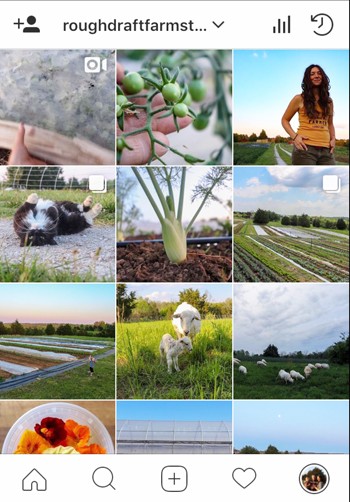 Research shows that the majority of Americans are now using social media, so it stands to reason that the majority of your future customers are, too. And because these sites are mostly free to join and cheap to advertise with, social media presents an incredible marketing opportunity for farmers. Turning your activity on social media into sales, however, is not as straight forward as simply signing up for a Facebook or Instagram account. Or so I learned.
Research shows that the majority of Americans are now using social media, so it stands to reason that the majority of your future customers are, too. And because these sites are mostly free to join and cheap to advertise with, social media presents an incredible marketing opportunity for farmers. Turning your activity on social media into sales, however, is not as straight forward as simply signing up for a Facebook or Instagram account. Or so I learned. 


 Weddings are a huge opportunity for local flower farmers, especially with the growing awareness of and demand for seasonal, sustainable flowers. And, if there is one time that people really want special flowers, it’s at their weddings.
Weddings are a huge opportunity for local flower farmers, especially with the growing awareness of and demand for seasonal, sustainable flowers. And, if there is one time that people really want special flowers, it’s at their weddings.


 For most established growers, the easiest place to start selling flowers will be mixed bouquets and single stem/small bunch retail sales. These are the flowers you can sell to your existing customers and they are easy to incorporate into farmers market, CSA, and grocery sales. But there are lots of other outlets out there, including florists, weddings and events, business subscriptions, value added products, and wholesalers.
For most established growers, the easiest place to start selling flowers will be mixed bouquets and single stem/small bunch retail sales. These are the flowers you can sell to your existing customers and they are easy to incorporate into farmers market, CSA, and grocery sales. But there are lots of other outlets out there, including florists, weddings and events, business subscriptions, value added products, and wholesalers.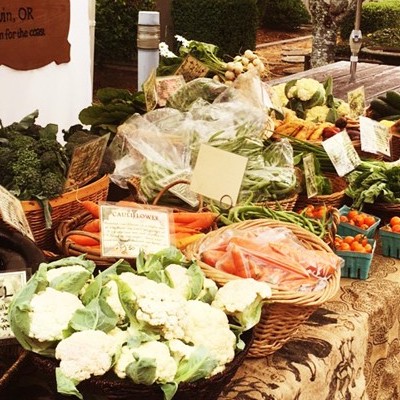
 Health is at the root of all the choices I make. I farm because working outdoors and being surrounded by fresh vegetables keeps me healthy. Spreading the health is the core of my business: I provide my neighbors with delicious, fresh vegetables that are a pleasure to eat. My farming practices center around the health of my soil, my plants, and my ecological and human community.
Health is at the root of all the choices I make. I farm because working outdoors and being surrounded by fresh vegetables keeps me healthy. Spreading the health is the core of my business: I provide my neighbors with delicious, fresh vegetables that are a pleasure to eat. My farming practices center around the health of my soil, my plants, and my ecological and human community.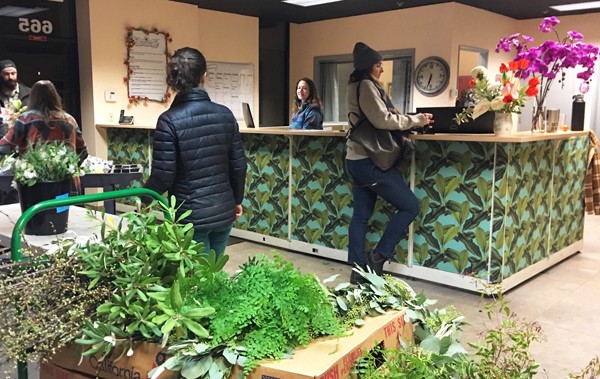 It takes courage to farm, no way around it and no matter what you farm. If you are trying to pull a living from working the land, you learn to live with risk on a daily basis, in a way that earning a regular paycheck won’t teach.
It takes courage to farm, no way around it and no matter what you farm. If you are trying to pull a living from working the land, you learn to live with risk on a daily basis, in a way that earning a regular paycheck won’t teach.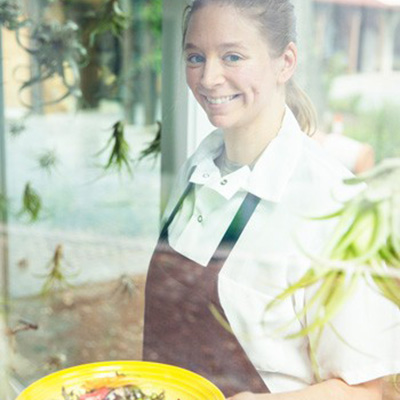
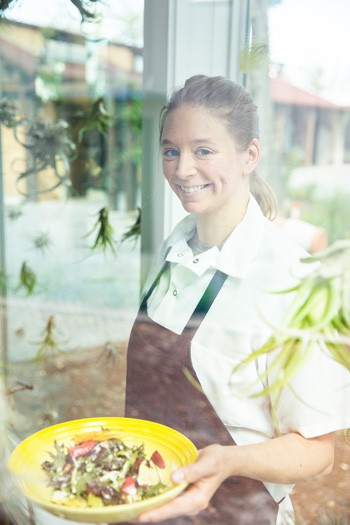 Our farm business has always centered primarily around our CSA, with a little bit of market and restaurant sales. However, for 2018 we wanted to expand our outlets to increase our income. And for me, selling more food to chefs was the obvious direction to go.
Our farm business has always centered primarily around our CSA, with a little bit of market and restaurant sales. However, for 2018 we wanted to expand our outlets to increase our income. And for me, selling more food to chefs was the obvious direction to go.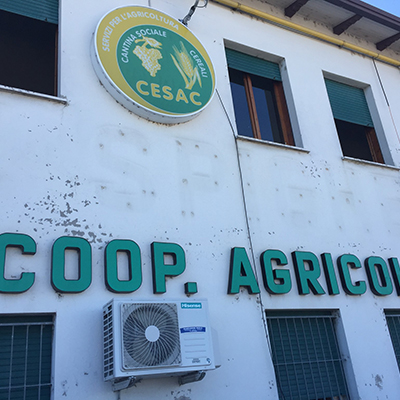
 With word that Amazon has purchased Whole Foods, farmers can be sure that the downward pressure on prices will continue. Farmers in many regions report declining CSA memberships and farmers market sales. Producers will have to think hard about the sustainability of their operations with regard to marketing and pricing amidst changing consumer expectations.
With word that Amazon has purchased Whole Foods, farmers can be sure that the downward pressure on prices will continue. Farmers in many regions report declining CSA memberships and farmers market sales. Producers will have to think hard about the sustainability of their operations with regard to marketing and pricing amidst changing consumer expectations.